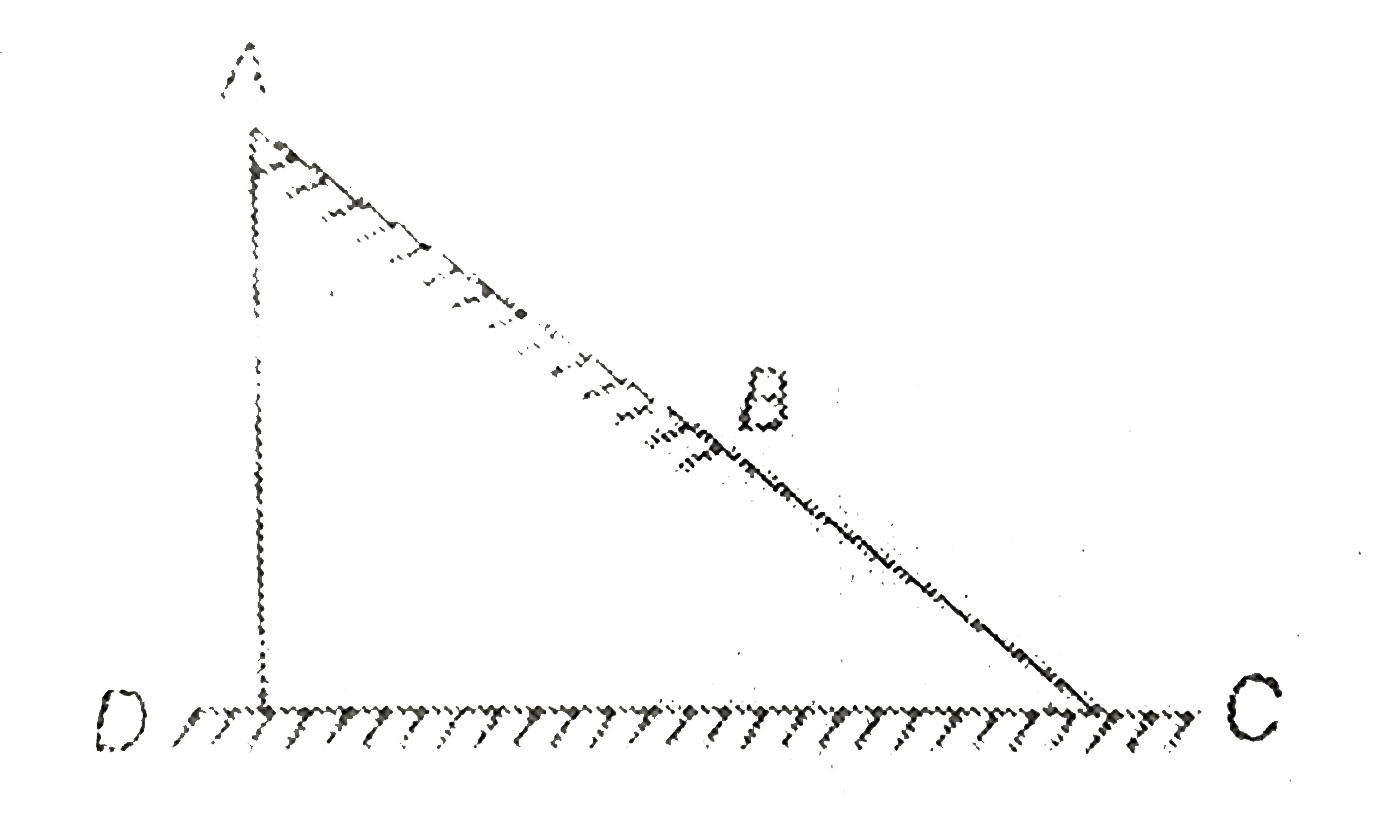A person is spinning with his hands outstretched at the rate of 3 rad/s.When he brings his hands close to the body,he spins at the rate of 9 rad/s.The ratio of initial rotational kinetic energy to final rotational kinetic energy of the person is
1:2
1:3
2:3
1:9
To find the ratio of the initial rotational kinetic energy to the final rotational kinetic energy of a person spinning with different angular velocities, we can follow these steps:
Step 1: Understand the formula for rotational kinetic energy
The rotational kinetic energy (KE) of a rotating object is given by the formula:
KE=12Iω2
where I is the moment of inertia and ω is the angular velocity.
Step 2: Identify the initial and final angular velocities
From the problem statement:
- Initial angular velocity, ωi=3rad/s
- Final angular velocity, ωf=9rad/s
Step 3: Establish the relationship of moment of inertia
When the person brings their hands close to their body, the moment of inertia decreases. However, since there is no external torque acting on the system, the angular momentum is conserved. Thus:
Iiωi=Ifωf
where Ii is the initial moment of inertia and If is the final moment of inertia.
Step 4: Calculate the ratio of kinetic energies
Using the formula for kinetic energy, we can express the initial and final kinetic energies:
- Initial kinetic energy:
KEi=12Iiω2i
- Final kinetic energy:
KEf=12Ifω2f
Step 5: Find the ratio of initial to final kinetic energy
The ratio of the initial kinetic energy to the final kinetic energy is:
KEiKEf=12Iiω2i12Ifω2f=Iiω2iIfω2f
Step 6: Substitute the conservation of angular momentum
From the conservation of angular momentum:
Iiωi=Ifωf⟹If=Iiωiωf
Step 7: Substitute If in the ratio
Now substituting If in the ratio:
KEiKEf=Iiω2i(Iiωiωf)ω2f
This simplifies to:
KEiKEf=Iiω2i⋅ωfIi⋅ωi=ω2iωf
Step 8: Calculate the ratio using the given values
Substituting the values of ωi and ωf:
KEiKEf=(3)29=99=1
Step 9: Final ratio
Thus, the ratio of initial rotational kinetic energy to final rotational kinetic energy is:
KEiKEf=13
Final Answer
The ratio of initial rotational kinetic energy to final rotational kinetic energy is 13.
---
The rotational kinetic energy (KE) of a rotating object is given by the formula:
KE=12Iω2
where I is the moment of inertia and ω is the angular velocity.
From the problem statement:
- Initial angular velocity, ωi=3rad/s
- Final angular velocity, ωf=9rad/s
When the person brings their hands close to their body, the moment of inertia decreases. However, since there is no external torque acting on the system, the angular momentum is conserved. Thus:
Iiωi=Ifωf
where Ii is the initial moment of inertia and If is the final moment of inertia.
Using the formula for kinetic energy, we can express the initial and final kinetic energies:
- Initial kinetic energy:
KEi=12Iiω2i
- Final kinetic energy:
KEf=12Ifω2f
The ratio of the initial kinetic energy to the final kinetic energy is:
KEiKEf=12Iiω2i12Ifω2f=Iiω2iIfω2f
From the conservation of angular momentum:
Iiωi=Ifωf⟹If=Iiωiωf
Now substituting If in the ratio:
KEiKEf=Iiω2i(Iiωiωf)ω2f
This simplifies to:
KEiKEf=Iiω2i⋅ωfIi⋅ωi=ω2iωf
Substituting the values of ωi and ωf:
KEiKEf=(3)29=99=1
Thus, the ratio of initial rotational kinetic energy to final rotational kinetic energy is:
KEiKEf=13
The ratio of initial rotational kinetic energy to final rotational kinetic energy is 13.
Topper's Solved these Questions
Similar Questions
The rotational inertia of a collapsing spinning star drops to 14 its initial value. What is the ratio of the new rotational kinetic energy to the initial rotational kinetic energy?
View SolutionA solid sphere of mass 10 kg and radius 0.5 m is rolling on a road without sliding with an regular velocity of 12 rad/s. What is the percentage of rotational kinetic energy in the total kinetic energy of the wheel?
View Solution
Knowledge Check
If a person sitting on a rotating stool with his hands outstretched, suddenly lowers his hands, then his
AKinetic energy will decreaseBMoment of inertia will decreaseCAngular momentum will increaseDAngular velocity will remain constantA person feels no sensation when he puts his hand over flame, the part of the brain which has damaged is
ACerebellumBCerebrumCHypothalamusDmedulla oblongataTwo rigid bodies with their moments of inertia in the ratio 2:3 have same rotational kinetic energy . Then ratio of their angular momenta is
A2:3B3:2C√2:√3D√3:√2
Portion AB of the wedge shown in figure is rough and Bc is smooth. A solid cylinder rolls without spinning from A to B. If AB=BC, then ratio of transitional kinetic energy to rotational kinetic energy, when the cylinder reaches point C is

View SolutionA spinning ice skater can increase his rate of rotation by bringing his arms and free leg closer to his body. How does this procedure affect the skater's angular momentum and kinetic energy.
View SolutionA vertically projected body attains the maximum height in 6s. The ratio of kinetic energy at the end of 3rd second to decrease in kinetic energy in the next three seconds is
View SolutionA man standing at the centre of a rotating table, with his hands stretched outwards. The table is rotating at the rate of 30 rev/minute. If the man brings his hands towards his chest and thereby reduces his moment of inertia to 35 times of its original moment of inertia, then the number of revolutions performed by the rotating table per minute will be
View SolutionA person with his hands in his pockets is skating on ice at the velocity of 10m/s and describes a circle of radius 50 m . What is his inclination with vertical
View Solution
